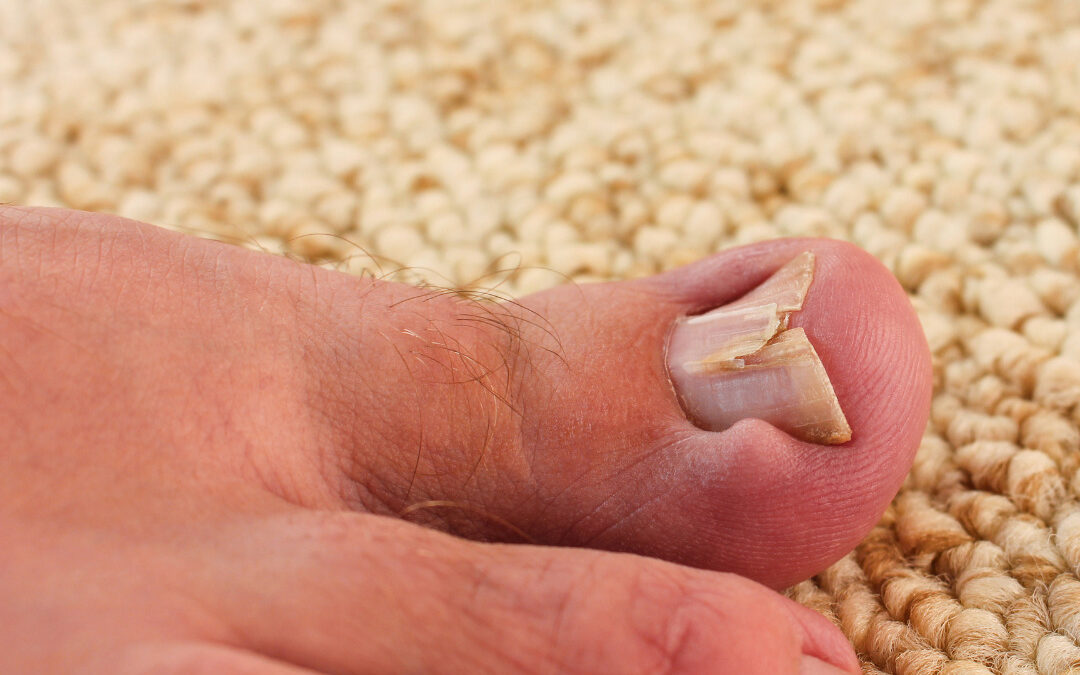INGROWN TOENAILS
An ingrown toenail is an extremely painful condition. It occurs when the edge of a nail penetrates the surrounding tissues of the toe (usually the big toe) and causes swelling, inflammation and infection. Ingrown toenails are commonly caused by poorly fitting shoes, but they can also be caused by improper trimming or by trauma.
When an individual experiences an ingrown toenail, it is not uncommon for them to attempt to rectify the problem themselves to alleviate their discomfort. In the vast majority of cases this serves only to irritate the nail wall, cause infection and worsen the condition.
Painful nails can also occur without the nail penetrating the toe. Shoe pressure on the nail wall can result in callous (hard skin formation) in the nail groove. If untreated this can build up and cause inflammation and infection. With this condition many people believe they have an ingrown toenail and frequently dig down into the groove to cut the nail, which in turn causes an ingrown toenail. Below are some examples of typical ingrown toenails.
The treatment of ingrown toe nails is initially centred on conservative management. This means the podiatrist removes the offending splinter of nail and the toe is dressed. Review appointments are made to ensure the nail does not penetrate the nail wall upon re-growth. Frequently ingrown toenails can be persistent and troublesome. In such cases nail surgery is recommended.
Nail surgery is the removal of a nail splinter, partial removal of a nail or the removal of the complete nail under local anaesthesia. One injection is given to each side of the toe. This numbs the toe and the splinter is removed. With partial or total nail avulsion a chemical may be employed to prevent further re-growth of the nail.
Reasons for Procedure
Nail surgery is most often performed for the following reasons:
- To relieve pain
- To relieve swelling (inflammation or infection)
- To remove a deformed nail
- To correct abnormal nail growth
How long will it take?
Less than 1 hour
Will it hurt?
Patients report no pain during the procedure once the anaesthetic has been given. There can be a little discomfort during the injection itself but this lasts for a very short period of time. The chemical utilised to prevent re-growth of the nail bed has analgesic properties, which in itself reduces post-operative discomfort.
Are there any complications to the procedure ie. Infection or bleeding?
Infection is always a concern but every step is taken to reduce the possibility of infection by the employment of aseptic techniques.
There is rarely any excessive swelling or bleeding following the procedure.
Outcome
Complete healing takes about four to eight weeks maximum but this does not interfere with most daily activities. If the entire nail is removed, the body generates hard skin to take its place. After the skin has covered the sensitive area, sporting activities can resume, shortly thereafter.
Many people suffer from painful nail conditions and as a consequence find that even with regular treatment the problem returns.
If you would like advice on a more permanent solution to painful nails, or if you have any other foot care concerns, why not consider contacting Considerate Foot Care?
